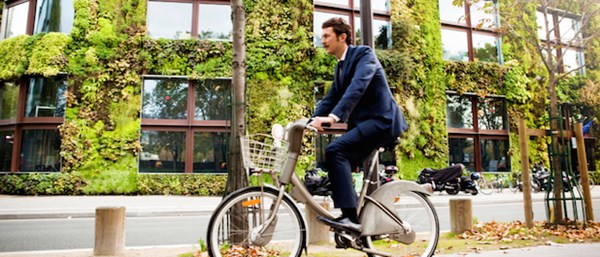TORONTO, April 21, 2015 (GLOBE NEWSWIRE) -- If you have an interest in home gardening or landscape design, you've likely heard of "living walls"—indoor or outdoor vertical gardens filled with plants, flowers, and even edible herbs and vegetables. Grown in containers and fastened to the walls of buildings or other structures, these walls bring living and breathing greenery into areas where horizontal space for traditional gardening is limited.
While they are trendy today, vertical gardening on walls has been around for centuries and was more recently popularized in the 1930s, partly as a way to reconnect city dwellers with nature. Living walls have evolved since then, and today plastics make it easier than ever to create beautiful walls of foliage in and around our homes.
A living wall typically begins with multiple planters that must fasten securely to walls while holding plants, soil, and water. Because plastics are both lightweight and strong, they're often the material of choice for planters used in living walls of all sizes. These benefits of plastics don't merely create aesthetically pleasing design features—living walls made with plastics can help us lighten our environmental footprint.
Here are some examples:
- Water Conservation: Plastics enable planter design features that can make it easier to water living walls with less—helping plants thrive with minimal water use. This is because some plastic planters use built-in reservoirs that conserve water by enabling precise watering while others use easy-to-install plastic drip irrigation systems to help make sure plants receive only the amount of water they need.
- Energy Efficiency: Living walls can help reduce the surrounding air temperature in urban environments—and this same principle may help improve energy efficiency in a home. One major living wall design company says that installing a large living wall in the interior of a home can help decrease air temperature, potentially reducing electricity use by 20 percent.
- Recycling: Some companies that manufacture vertical gardening equipment now use recycled plastics to make their products. It's easier than ever to find rigid planters made with recycled polypropylene plastic (the type used for yogurt and margarine containers), as well as fabric planters made with recycled PET plastic from beverage bottles. Seeking out these and other recycled plastic products helps divert used plastics from landfills.
Due to these environmental benefits, many designers now incorporate living walls into the interior or exterior plans for new buildings. In fact, living walls potentially can help earn credits in LEED® Canada for Homes certification categories—such as Water Efficiency and Energy & Atmosphere—while beautifying the spaces in which we live and work.
Today's intelligent plastics are vital to the modern world. These materials enhance our lifestyles, our economy and the environment. For more information visit www.intelligentplastics.ca.
A photo accompanying this release is available at: http://www.globenewswire.com/newsroom/prs/?pkgid=32282
